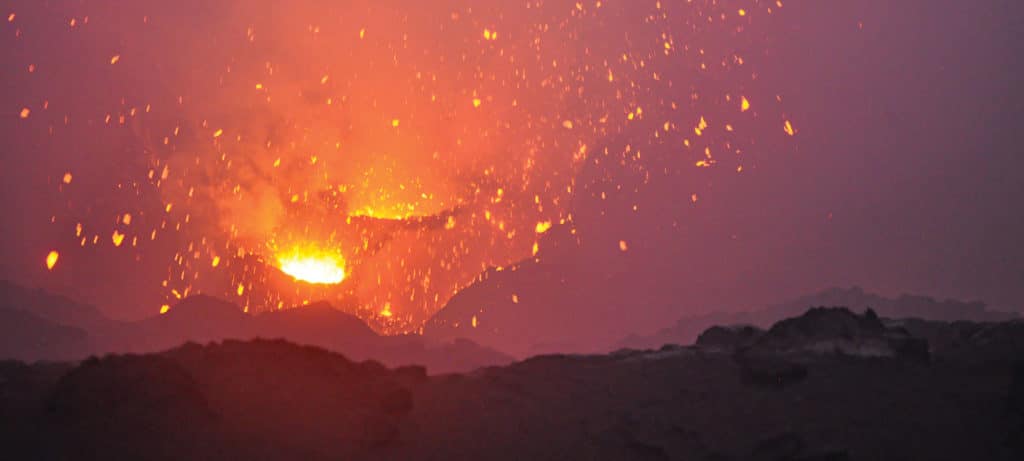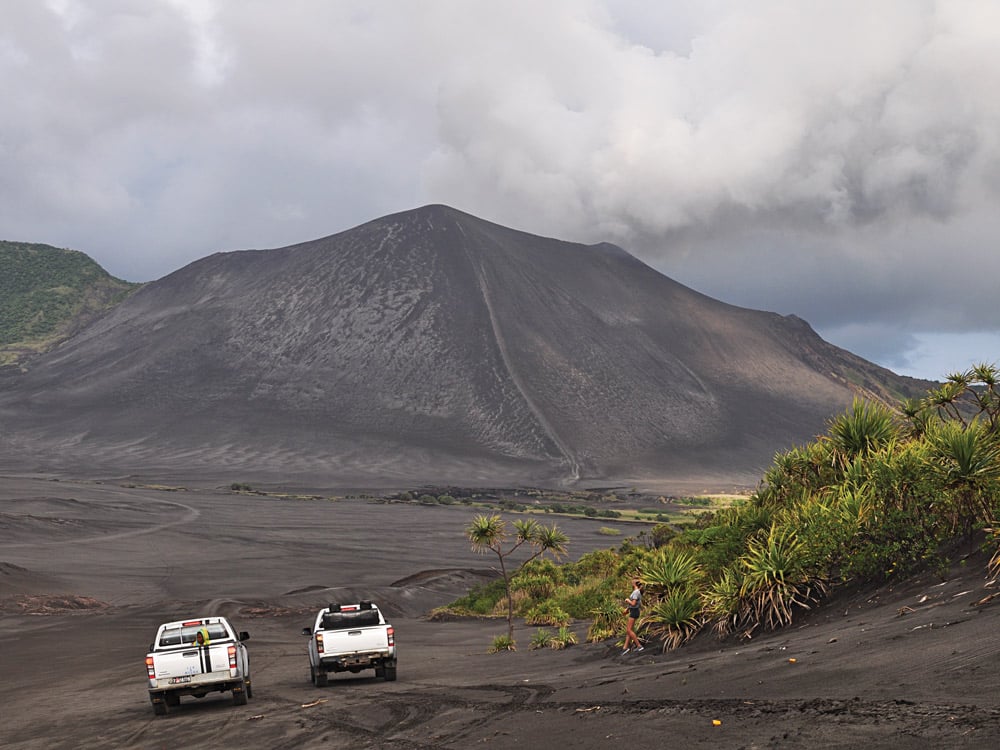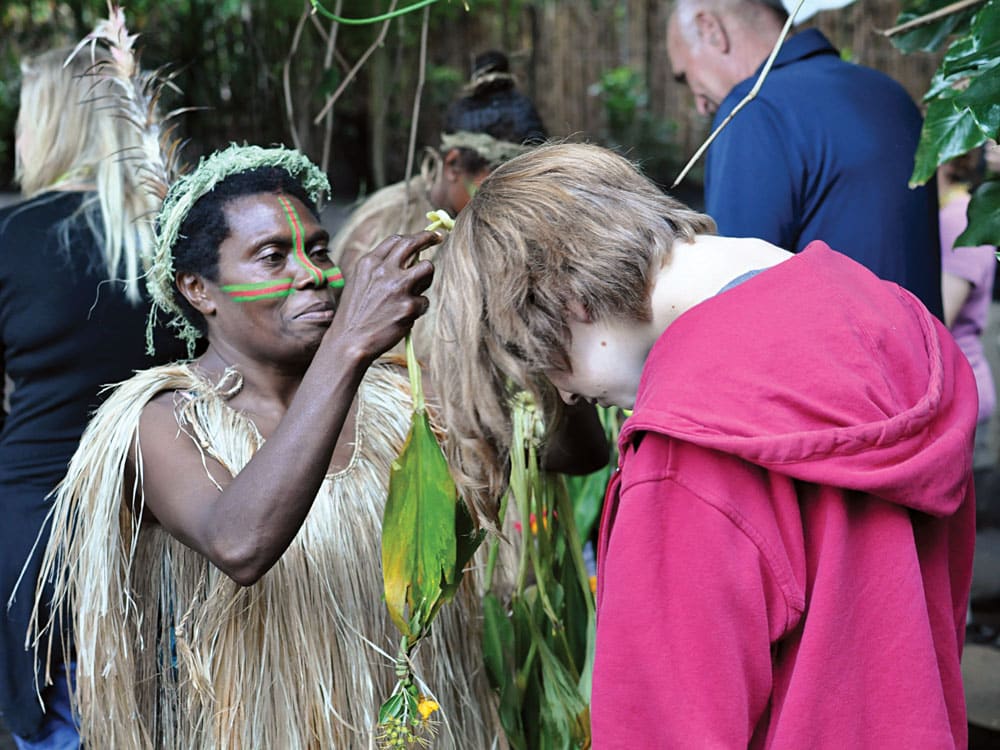
Vanuatu’s Mount Yasur volcano, on Tanna Island, has been erupting continuously for hundreds of years. I’d long been eager to visit, but when we landed in Vanuatu after a sublime four-day passage from Fiji, I began to wonder if I’d be disappointed. After all, disappointment is a product of expectations, and my expectations had grown sky-high after reading numerous accounts from other cruisers over the years.
We drove to the mountain in the cab of a small pickup truck, over rough dirt roads at 15 mph, paved roads at 40 mph, and very steep switchbacks at 5 mph. When we reached the base of the mountain, the road disappeared, and we were in an otherworldly landscape of black sandy ash that is constantly shifted and smoothed over by water and wind. This active, impermanent landscape allowed us to imagine we were the first people to have come this way. Before us the mountain rumbled and smoke rose from its crater.
When we arrived at the visitors center, we were joined by about two dozen other tourists and briefly entertained by dancers from the village at the mountain’s base. I was chosen from the audience to present kava to the chief and to ask for his blessings and our safety. This kind of thing, orchestrated and repeated for tourists before and after us, can seem like shtick, but the ceremony, however rote, is genuinely important to these Pacific islanders.
Next, we all crowded into the beds of another four small pickup trucks for the slow, muddy, steep ride to the summit. Along the way, the ground we drove on steamed, and what we were doing got real. On the steep final trek to the summit on foot, the sounds from the mountain weren’t the deep baritone rumble I expected. The sound was more like someone shaking a large piece of sheet metal behind the curtain of a school play to simulate thunder, only louder. When we finally crested the ridge, we witnessed our first volcanic explosion.

The sky flashed, and the wall of steam and smoke before us pulsed. Just as my mind started to process what I’d seen, I felt the pressure of the shock wave in my sinuses and ears, followed by what sounded like a shotgun blast at very close range. A full two seconds later, glowing clumps of lava arced hundreds of feet into the air, appearing to climb in slow motion, before falling back below the rim of the mountain. Then came the sustained sound that was like gravel cascading down a metal roof — the world’s youngest rocks — rolling down the inside of the crater walls, toward the calderas from which they’d just erupted.

This same sequence would repeat every few minutes for the hour and a half that we were there.
The sun had set and light was fading fast when we began walking up and around the rim to a vantage point that allowed us to see inside the crater, the place from which all this drama came. But as we got farther around the rim and the view got better, wind shifts regularly pushed the volcano’s emissions toward us.
The smoke was thick and full of grit. I thought of all the heavy metals and other toxins I couldn’t avoid breathing. We all stood against this onslaught, coughing and wiping volcanic sand out of our tearing eyes and spitting it out of our mouths. Those of us without handkerchiefs sought refuge in the collars of our shirts. The escape from the madness was right there, the path we’d walked up, yet none of us could yet turn away. Instead we waited in the glow of molten rock — on a precipice above an active volcano, before all that power, the wind and warmth swirling in the darkness, no handrails or anything between us and two white-hot gaping holes that led right to the planet’s upper mantle — for just one more shock wave to penetrate our bodies.








